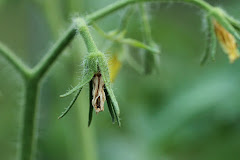 Bare root strawberry planting is generally done in early spring meaning April in our area. Container transplants can be planted now into May and even later.
Bare root strawberry planting is generally done in early spring meaning April in our area. Container transplants can be planted now into May and even later. Strawberries are a productive and rewarding fruit crop for our area. They will come into production in a year or less and can be used as an attractive groundcover as well as in pots. Locate them in an area with full sun protected from wind and amend soil before planting.
 One of the most rewarding types of strawberries to grow are Junebearers because berries have the fragrance and intense flavor often missing from store bought fruit. The downside of these types is that if spring frost damages blossoms little or no crop will be produced until the following year. Recommended varieties are Honeyoye, Guardian, Kent, Cabot, Mesabi and Jewel. These are generally grown as matted rows.
One of the most rewarding types of strawberries to grow are Junebearers because berries have the fragrance and intense flavor often missing from store bought fruit. The downside of these types is that if spring frost damages blossoms little or no crop will be produced until the following year. Recommended varieties are Honeyoye, Guardian, Kent, Cabot, Mesabi and Jewel. These are generally grown as matted rows.Everbearing types produce two main spring and fall crops per season with a few berries in between. They are hardy and reliable. Recommended varieties are Quinault, Ogallala (for clay) and Fort Larimie (best on sandy soil).

Day Neutral types flower and fruit on six week cycles over the summer but generally yield less than other types. They can be grown as annuals and removed as you would annual flowers. They are sensitive to drying out and heat. Varieties include Tristar, Tribute and Fern.
Both Everbearers and Day Neutral types are generally grown in individual "hills" even though they may end up being more on the level. Raised mounds are helpful as strawberries are very subject to root diseases and require good drainage. Remove runners to preserve separate plants.
Why not plant some of each type to hedge your bets and gain some of the advantages of each?
Photo credit: All Carl Wilson





 6. Fabric removed, Seed germination success!
6. Fabric removed, Seed germination success!





